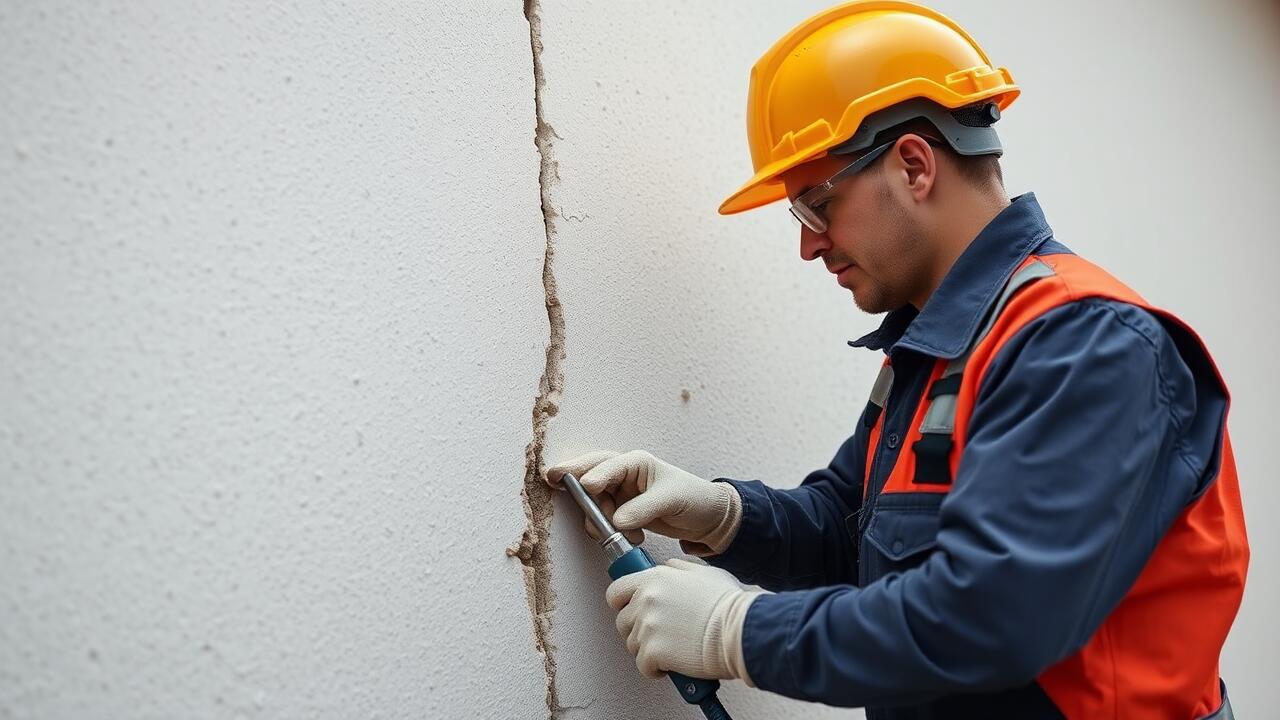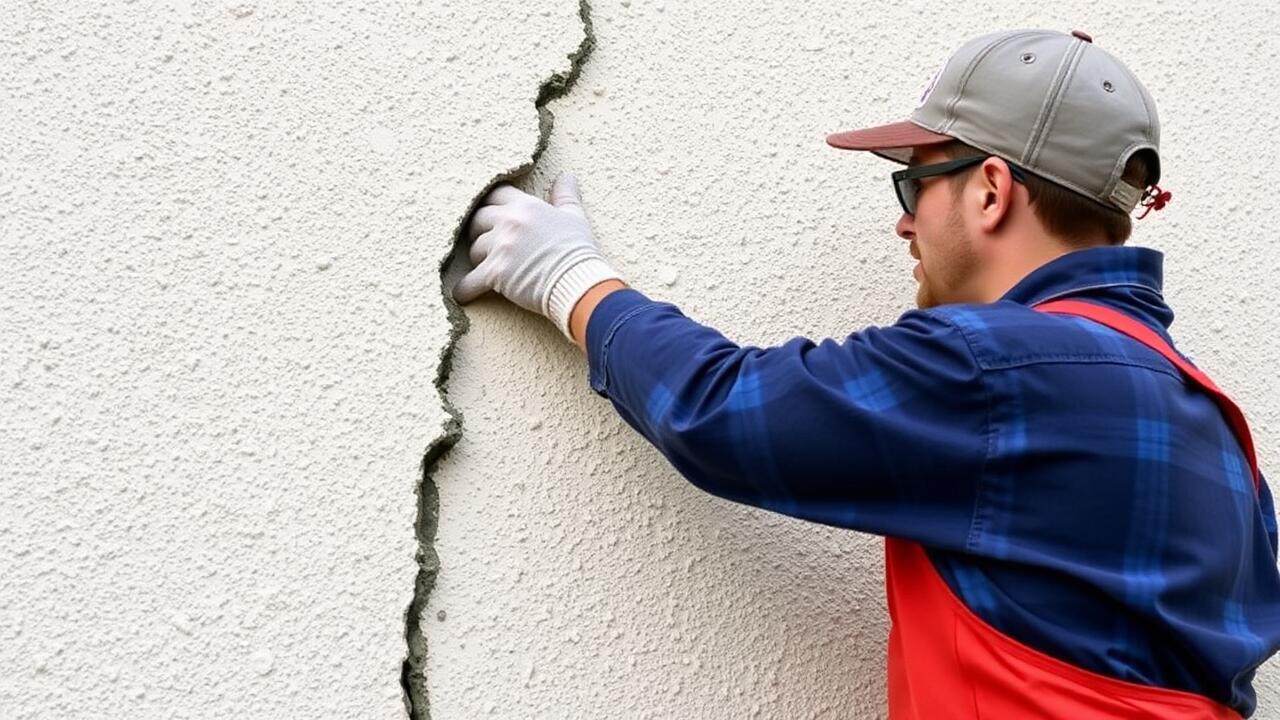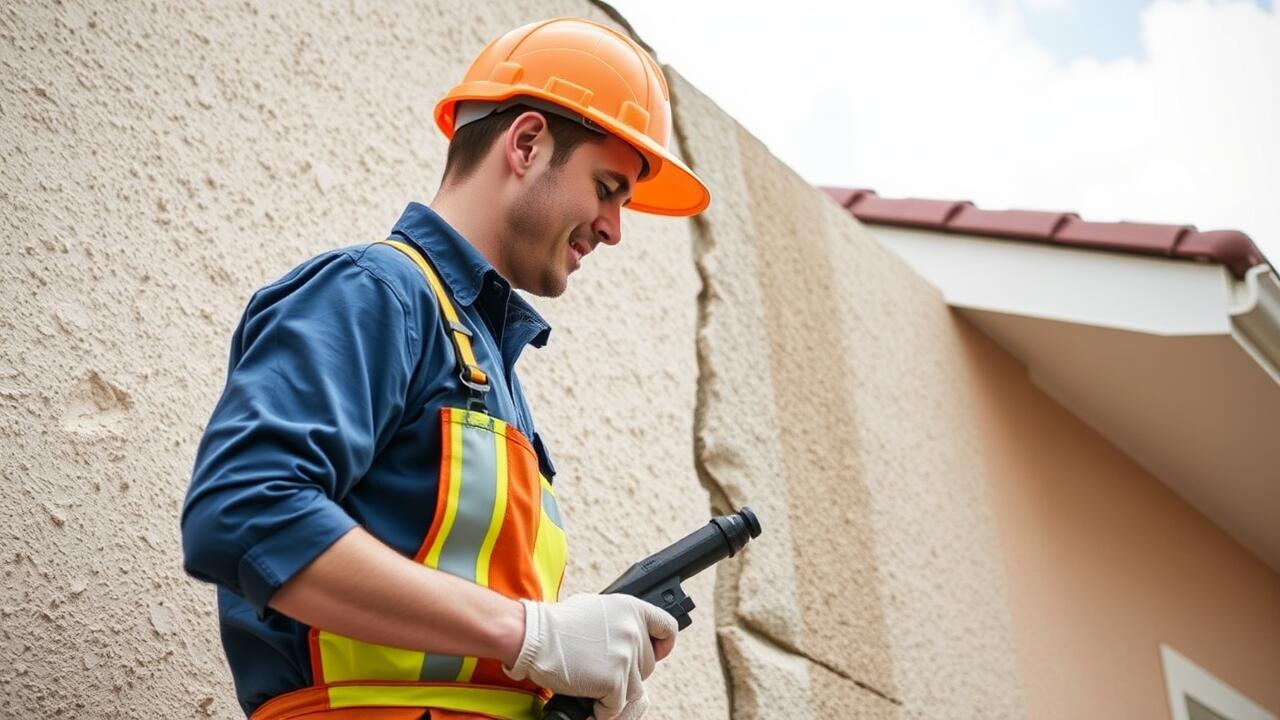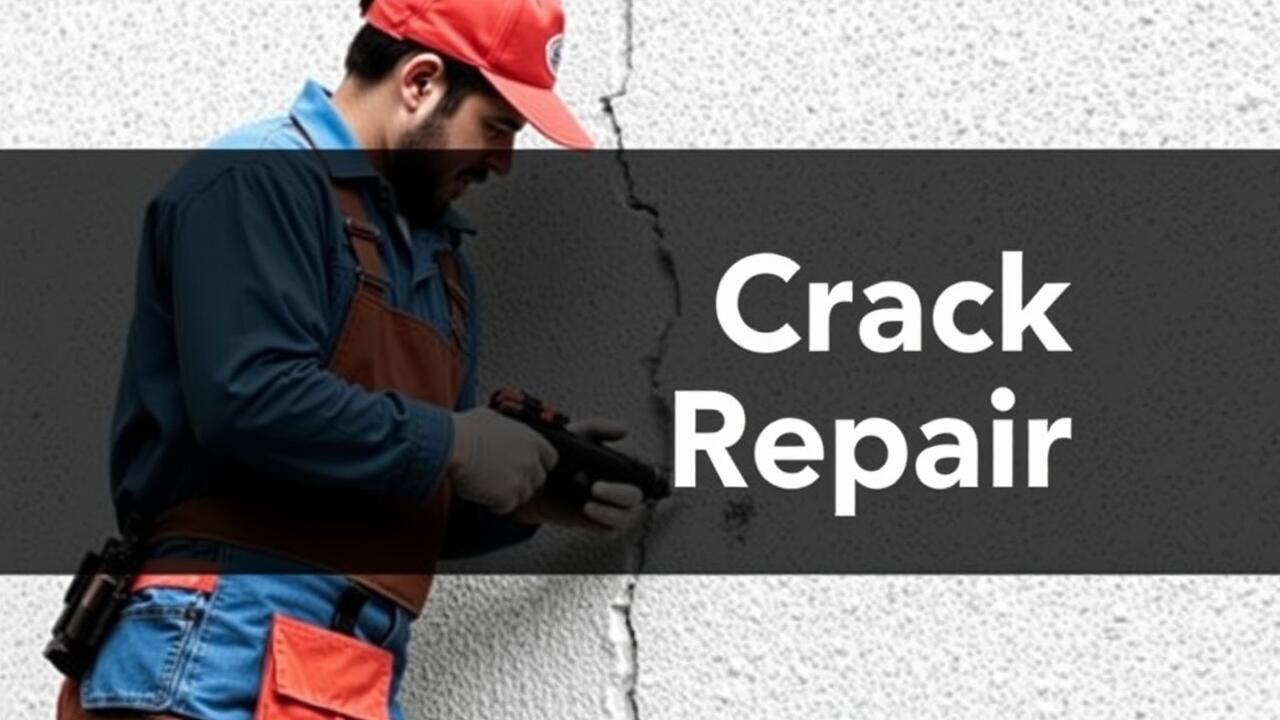
The Process of Moisture Testing
Moisture testing is a crucial step in identifying the underlying issues that contribute to stucco cracks. Various methods can be employed to assess moisture levels within the stucco, such as the use of moisture meters, infrared thermography, and nuclear density gauges. Each technique provides valuable insights into potential water infiltration and helps determine the extent of damage present. Homeowners often seek professional services by searching for "Stucco Crack Repair near me" to ensure a thorough assessment.
In addition to traditional moisture testing techniques, visual inspections play an essential role in the process. Inspectors typically examine the exterior for signs of water damage, such as discoloration, peeling paint, or efflorescence. These indicators can be used in conjunction with moisture readings to create a comprehensive understanding of the stucco's condition. By combining both quantitative and qualitative approaches, property owners can effectively address moisture issues and prevent further deterioration.
Techniques for Assessing Moisture Levels
Various techniques are available for accurately assessing moisture levels in stucco. One common method involves the use of a moisture meter, which can gauge the moisture content within the stucco material. By inserting the probes into the stucco surface, the device provides an immediate reading, helping to identify areas that may be at risk for cracking due to excessive moisture. Additionally, visual inspections can be instrumental in spotting signs of moisture intrusion, such as bubbling or discoloration.
Another effective technique for assessing moisture levels is the use of infrared thermography. This non-invasive approach detects temperature variations on the stucco surface, indicating hidden moisture pockets beneath the exterior. By combining multiple methods, property owners can obtain a comprehensive understanding of moisture conditions affecting their stucco. Homeowners seeking assistance may search for "Stucco Crack Repair near me" to find local professionals equipped to handle moisture-related issues efficiently.
Preventative Measures for Stucco Integrity
Maintaining the integrity of stucco surfaces is essential to prevent moisture infiltration that can lead to extensive damage. Regular inspections of the exterior can help identify cracks and vulnerabilities before they worsen. Homeowners should ensure that gutters and downspouts are functioning properly to direct water away from the stucco. Proper drainage systems are vital for minimizing moisture exposure.
Additionally, applying a quality water-resistant sealant can further protect stucco from moisture. This treatment not only adds a protective layer but also helps repel water, reducing the risk of cracks. For those unsure about their stucco's condition, searching for "Stucco Crack Repair near me" can connect them with professionals who can assess the situation and provide needed maintenance.
Best Practices to Minimize Moisture Exposure
Ensuring that stucco surfaces remain dry is essential for preventing moisture-related issues. Regular maintenance plays a crucial role in this regard. Inspecting stucco walls for signs of wear or damage can help catch potential problems early. Keeping gutters clear and directing downspouts away from the foundation can prevent water buildup. Additionally, landscaping should slope away from structures to encourage drainage, further reducing moisture exposure.
Applying a water-resistant sealant to stucco can add an extra layer of protection. This sealant acts as a barrier against water infiltration, extending the lifespan of the exterior. Homeowners should also be mindful of nearby sprinkler systems and adjust them to avoid excessive moisture near stucco surfaces. If moisture-related issues arise, searching for "Stucco Crack Repair near me" can connect homeowners with professionals who specialize in addressing these specific challenges.
Repairing Moisture-Induced Cracks
Repairing moisture-induced cracks in stucco requires a careful approach to ensure a long-lasting solution. First, it's essential to assess the extent of damage. Cleaning the crack thoroughly helps remove any debris or loose material that might hinder the repair. For minor cracks, a mixture of stucco patching compound can be applied directly into the crevice, smoothing it out to match the surrounding surface. Larger cracks may require a more structured approach, possibly involving mesh tape for added support.
Homeowners often seek "Stucco Crack Repair near me" to find professionals who specialize in these repairs. An expert can provide not only the repair services but also insights into potential underlying moisture issues. Before beginning the repair process, it might be necessary to address any sources of moisture infiltration to prevent future damage. After repairs are completed, a sealant can be applied, offering protective benefits and prolonging the life of the stucco.
Steps for Effective Crack Repair
Effective crack repair begins with a thorough assessment of the damage. Identify the size and cause of the cracks, ensuring that any underlying moisture issues are addressed before proceeding. This may involve clearing out debris and loose material from the cracks to prepare for a more permanent solution. Proper cleaning helps ensure good adhesion of the repair material. Employing a high-quality patching compound specifically designed for stucco can significantly enhance the durability of the repair.
After applying the patching compound, smooth the surface to match the surrounding stucco. It is essential to allow the repair to cure properly according to the manufacturer's directions. Regular maintenance checks should be conducted to monitor for new cracks or signs of moisture intrusion. If you're searching for assistance, consider looking for "Stucco Crack Repair near me" to find local professionals who can provide expert support and advice on maintaining your stucco’s integrity.
FAQS
What are the common signs of moisture damage in stucco?
Common signs of moisture damage in stucco include visible cracks, discoloration, peeling paint, and the presence of mold or mildew.
How can I test for moisture levels in my stucco?
Moisture levels in stucco can be tested using various techniques, such as a moisture meter, infrared thermography, or by conducting a simple plastic sheet test.
What preventative measures can I take to protect my stucco from moisture?
To protect your stucco from moisture, you can ensure proper drainage, regularly inspect and maintain caulking and sealants, and keep landscaping away from the stucco surface.
How do I repair moisture-induced cracks in stucco?
To repair moisture-induced cracks in stucco, first clean the area, apply a suitable caulk or patching compound, and finish with a texture that matches the surrounding area.
Is it advisable to DIY stucco repairs, or should I hire a professional?
While minor repairs can often be done as a DIY project, hiring a professional is recommended for larger or more complicated repairs to ensure proper techniques and materials are used.



